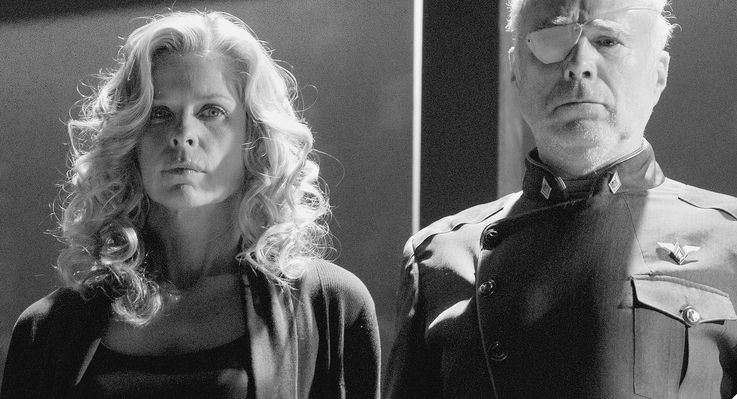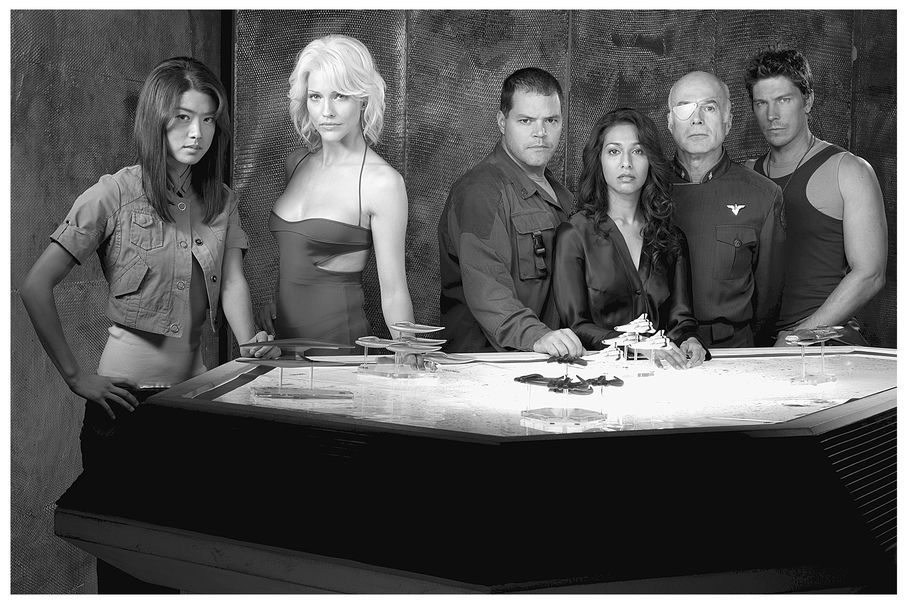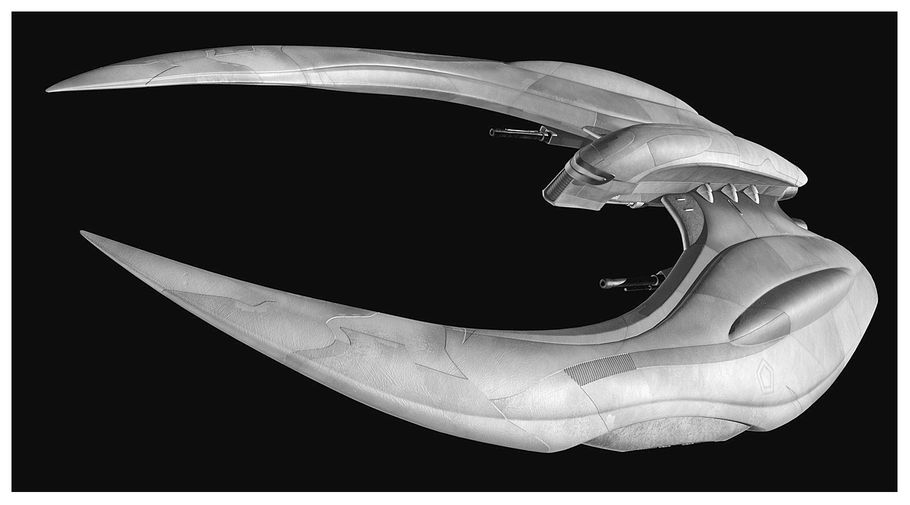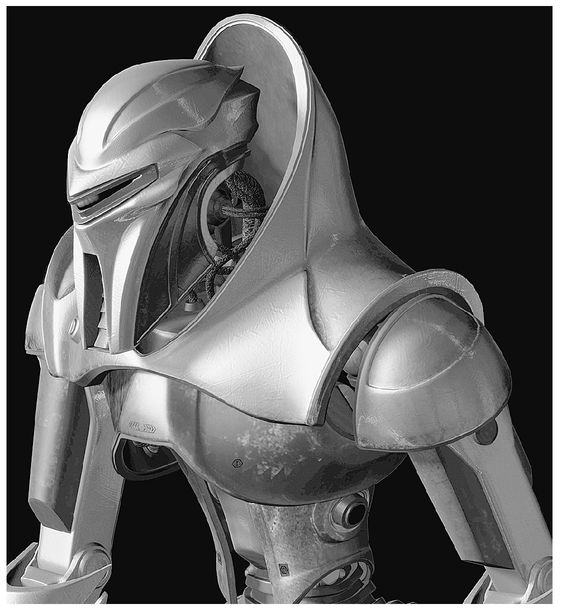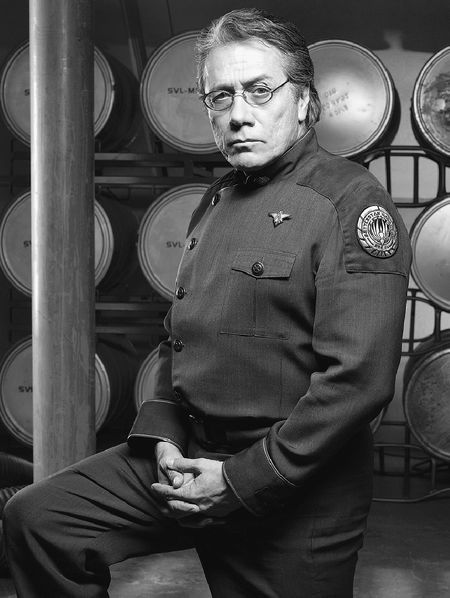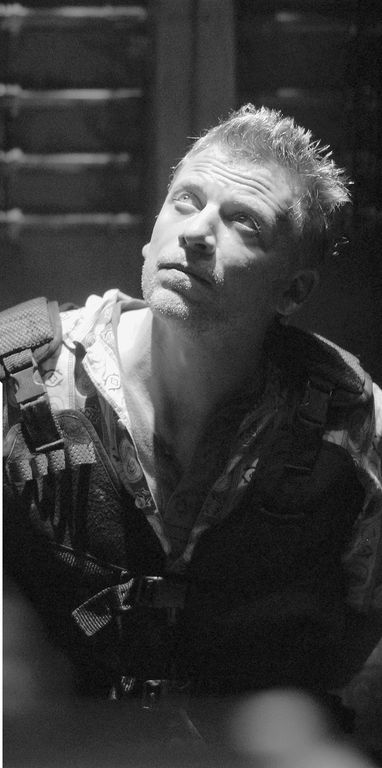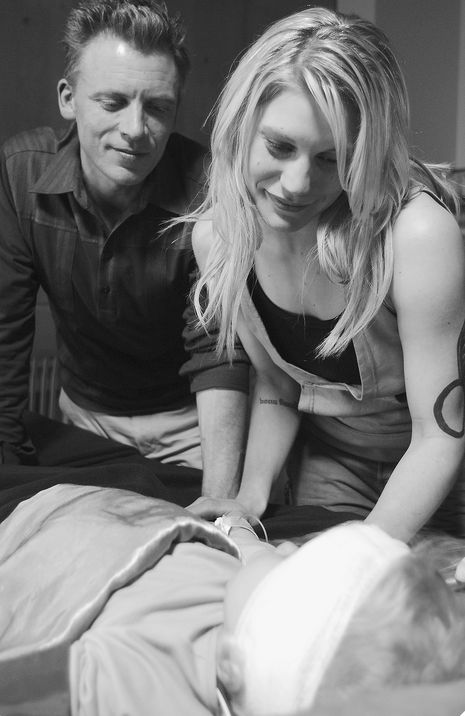Table of Contents
Title Page
Copyright Page
Dedication
Foreword
Acknowledgments
Introduction
PART ONE - LIFE HERE BEGAN OUT THERE
CHAPTER 1 - Are You Alive?
CHAPTER 2 - The Cylons: Man or Machine?
Humanoid Cylons
Raider Cylons
Centurions
CHAPTER 3 - Are We Creating Our Own Cylons?
CHAPTER 4 - Cylon Intelligence and the Society of Mind
CHAPTER 5 - How Can Cylons Download Their Memories?
CHAPTER 6 - A Dialogue between a Smartass Fanboy and a Real Scientist, viz: The ...
CHAPTER 7 - Colonial + Cylon + Natives = Human?
CHAPTER 8 - The Colonial Pharmacopeia
Bittamucin
Morpha
Moxipan
Stims
Serisone
Interrogation Drugs
Anti-Radiation Medication
Bloodstopper
PART TWO - THE PHYSICS OF BATTLESTAR GALACTICA
CHAPTER 9 - Energy Matters
CHAPTER 10 - E = mc
CHAPTER 11 - Special Relativity
Time Dilation
Lorentz Contraction
CHAPTER 12 - General Relativity and Real Gravity (or the Lack Thereof)
CHAPTER 13 - The Wonderful World of Radiation
CHAPTER 14 - The Effects of Nuclear Weapons, or How the Cylons Can Reoccupy ...
PART THREE - THE TWELVE COLONIES AND THE REST OF SPACE
CHAPTER 15 - Our Galaxy
CHAPTER 16 - A Star Is Born
CHAPTER 17 - The Many Different Types of Planets
Planets
Satellites
CHAPTER 18 - Black Holes
CHAPTER 19 - There’s No Sound in Space, and No Color, Either
CHAPTER 20 - Water
PART FOUR - BATTLESTAR TECH
CHAPTER 21 - The Rocket’s Blue Glare: Sublight Propulsion
CHAPTER 22 - Faster Than Light: Galactica’s Jump Drive
Teleportation
Hyperspace
Wormholes
Space Warp
CHAPTER 23 - Artificial Gravity
CHAPTER 24 - Navigation
Defining a Coordinate System or Reference Frame
Where Are We?
CHAPTER 25 - Battlestars, Vipers, and Raptors
Vipers
Raptors
CHAPTER 26 - Toasters and Jam: The Complexities of Electronic Warfare
Electronic Detection
Electronic Countermeasures
Electronic Counter-Countermeasures
ELINT and SIGINT
CHAPTER 27 - How Did the Cylons Infiltrate the Colonial Computer Infrastructure?
CHAPTER 28 - So Where Are They?
AFTERWORD
NOTES
CREDITS
ABOUT THE AUTHORS
INDEX
For my mother and the memory of my father
—P. D.
To everybody who made
Battlestar Galactica a reality
—K. G.
FOREWORD
“I’m going to tell the best possible story, and I don’t care how many geeks I have to offend to get it done.”
This sentiment, in various incarnations, is frequently expressed by television writers. What they mean is that they’re willing to ignore science, the what-would-really-happen, in order to tell the most compelling story. And, honestly, that makes sense. A TV writer’s job is to entertain, after all. It’s 30 Rock, not Igneous Rocks. And it is certainly true that the tension in your real-time nail-biter of a detective drama might dissipate somewhat during that realistically long wait while the lab patiently sequences DNA. Settling on a less-than-dramatic story just so that the tiny percentage of viewers who know the science aren’t tempted to throw things—it just doesn’t seem like a winning strategy.
But the two priorities do not have to lie in opposition to each other. At Battlestar Galactica (also referred to in this book as Battlestar, Galactica, and BSG), writers were not allowed to jettison science for the sake of story. Other than in specific instances of intentionally inexplicable phenomena, science was respected. In this way, Battlestar Galactica resembled the classic tradition of science fiction novels, which didn’t see science as a hindrance to the story but as a springboard.
The first episode of Battlestar that I cowrote was called “The Passage,” and it was all about a risky mission in which pilots escort an instrument-blind fleet through a high-radiation space phenomenon called a “globular cluster.” The mission was complex in terms of tactics as well as science, a tough one-two punch. My initial instinct was to simplify the mission, the dangers, the science—to simplify something—because I simply couldn’t believe that the fragile tension of a forty-two-minute story could bear for seven of those minutes to be exposition. I wasn’t convinced that it would work, in fact, until I saw the completed episode. The meticulous set-up of the strategy and dangers rings true because it is true. At least, it is true to the extent that I captured what I was being educated about during the writing process. (Did you know there’s a difference between radiation and radioactivity? Oh, well, that’s just me that didn’t know, then.)
The sentiment of story over science with which I started this piece still echoed in my ears, even after “The Passage,” and there was a period during which I had to learn the lesson repeatedly. When I needed something to malfunction on a Raptor, I was surprised to find that I actually had to investigate which of the Raptor’s functions were controlled by which mechanisms and where they were located. When I needed to describe the effects of death in a vacuum, I needed to resist rumor (“Your lungs pop out of your nose!”) and find out what really happens. (Your lungs don’t pop out of your nose or anywhere else interesting.) And don’t get me started on “single-event upsets.”
Sometimes we writers ignored the advice we were given—either because there is a limit on the stretchiness of a teleplay to accommodate explanation, or because we really were dealing with a situation that intentionally defied explanation, or just because of limits on our time and skill. But we really tried, and the truism of story versus science seemed less true every time I tested it. In fact, it starts to seem absurd. Truth, generally defined as “emotional truth,” is a huge part of what makes a good story. Is it so surprising that other kinds of truth would also support, not undermine, the same goal? As the child of a chemist, I’m startled it took me so long to realize it.
The man supplying the Battlestar writers with our technical and scientific information was Kevin Grazier. In the time that I was writing for the show he personally advised me on: algae, globular clusters, fuel processing, Raptor thrust and steering mechanisms, CO2 scrubbers, the effects of a vacuum on a human body, SEUs, hypoxia, hypothermia, constellations, the distances of space, Jumping, and a lot of things I’ve already forgotten. If the Cylon base ship toilet in one of my first drafts had survived to a production draft, I suspect we would’ve had a talk about it, too. (I saw it as a sort of living pulsing suction-cup-shaped protuberance.)
The point of Battlestar Galactica was not, ultimately, science. It was a show about the human condition, hope, and moral grayness. But science didn’t distract us from telling the stories we wanted to tell. It helped us. And Kevin helped us get the science right. So enjoy this volume—if Kevin says it’s true, it must be so.
So Say We All!
Jane Espenson
Co-executive Producer
Los Angeles
ACKNOWLEDGMENTS
Kevin says: Common wisdom holds that everybody who works in Hollywood does so because they caught their “big break.” For mine I would like to thank Bryan Fuller for “pitching” me as science advisor to Battlestar Galactica executive producer Ronald D. Moore. On a related note, I can’t thank Ron enough for taking a leap of faith and giving this longtime sci-fi nerd the opportunity and the honor to work on the best show on television, especially after what was likely the shortest job interview in recorded history. I’d also like to thank Patrick Di Justo, Giles Anderson, and Connie Santisteban for including me in this project in midstream. Thank you to executive producer David Eick and the cast and crew—in particular the writing staff—of Battlestar Galactica. Not only did their efforts make this book possible, but everyone was a joy to work with over the span of four they-went-far-too-quickly seasons. Finally, I’d like to thank Kendra “Not Shaw” Penny for all her sacrifices that made my contribution to this book possible. So Say We All!
Patrick says: I’d like to thank our Wiley (and wily) editor, Connie Santisteban, who safely shepherded this project through the times when we were under Cylon attack; my agent, Giles Anderson, who convinced me to write this proposal as an exercise and then turned it into a book; the folks at Wired magazine, including but not limited to Chris Baker, Rob Capps, Erik Malinowski, Joanna Pearlstein, Adam Rogers, and Nick Thompson; everyone in the Facebook group “The Science of Battlestar Galactica”; the BSG-Park Slope triumvirate: Erica Blitz (aka “ProgGrrl”) of the fansite Galactica Sitrep, superfan and Daily Show writer Rob Kutner, and BSG guest star John Hodgman; my fellow Brooklyn BSG panelists: John Brooks, Ajay Singh Chaudhary, Shane Froebel, and Laura Lee Gulledge; book guru Ellie Lang; Megan Kingery of Science House; pop culture writer Racheline Maltese; the wonderfully supportive people of The WELL’s <byline> and <sftv> conferences; and my siblings Andy Di Justo and Melissa Perdock.
This book could not have been completed without Emily Gertz. During the writing of this book, Emily made sure I ate, made sure I slept, stuck with me in the emergency room when my zeal to produce this book put me there, and on occasion would remind me to repeat to myself it’s just a show—I should really just relax.
INTRODUCTION
Moore’s Law
It has been called the best show on television, and as real as science fiction gets. It has dealt with issues of religious freedom, basic human rights, patriotism, terrorism, genetic engineering, and the ultimate science fiction question: What does it mean to be human?
The show is Battlestar Galactica, a twenty-first-century reimagining of the classic 1970s television series with the same basic story-line: humanity inhabits twelve different planets, known as the Twelve Colonies. The ancient birthplace of their species, a planet called Kobol, is a distant memory. Some fifty years prior to the beginning of the series, Colonial scientists created a race of robots they called Cylons, who eventually attained sentience and rebelled against their creators. After a long and bloody war, which ended in a stalemate/ cease-fire, the Cylons withdrew, presumably to find a planet to call their own. Eventually the robots evolved from purely mechanical creatures into biologically engineered creatures nearly indistinguishable from the Colonials themselves.
At the beginning of the miniseries, these humanoid Cylons insinuate themselves stealthily into Colonial culture, circumvent the defenses of the Twelve Colonies, and wipe out almost all of humanity. The only humans who are spared are a handful on the various planets who are able to escape and those fortunate enough to be on spacecraft during the attack: roughly fifty thousand humans on sixty vessels. This Rag Tag Fleet has only the aging battlestar Galactica for protection. Now in need of a home, they decide to search for the semimythical planet Earth, with the Cylons in relentless pursuit.
The new Battlestar Galactica (BSG to its fans) eschews the meaningless whiz-bang shoot-’em-ups of the earlier show,a choosing to focus instead on character development and conflict, both internal and external. Sometimes the characters are so developed that it becomes difficult to tell exactly who the good guys are. The executive producer David Eick has said that “We’re not doing our jobs if, at least once a week, the viewer doesn’t ask, ‘Am I rooting for the wrong team? ’ ”
A case in point comes in the third-season episode “Precipice.” Colonel Saul Tigh, a career military officer in the Colonial Fleet, is trapped on New Caprica, a barely habitable planet the Colonists are calling home. The Cylons have occupied the planet, and Tigh has become a full-fledged resistance fighter/terrorist against the occupation government. When another character questions Tigh’s use of terror against civilians, Tigh tells him exactly where things stand: “Which side are we on? We’re on the side of the demons, Chief. We are evil men in the gardens of paradise, sent by the forces of death to spread devastation and destruction wherever we go. I’m surprised you didn’t know that.” We, the audience, found ourselves supporting Tigh, silently advocating the same tactics we condemned when the Cylons used them only a few episodes before. b
Many of the elements of the show have parallels to real life: Caprica, the most advanced planet of the Twelve Colonies, represents America. c
Lee Adama, Admiral William Adama, and Kara "Starbuck" Thrace.
Cylon models Eight and Six with scientist Gaius Baltar (middle).
The Cylons are fundamentalist religious terrorists.d The Cylon attack on the Twelve Colonies invokes memories of 9/11.e The swearing-in of President Roslin is filmed in the same manner as that of President Johnson following JFK’s assassination in Dallas.f The list goes on and on. We understand that this same story of the clash of civilizations could be told—and is being told every day on the nightly news—without the trappings of space flight and robots. For that reason, Battlestar Galactica has also been called a science fiction show without science.
Ron Moore is on the record as saying that when he worked on the various
Star Trek TV series, the intense level of Roddenberrian technolove for the Starship
Enterprise actually hindered story development when the immense level of background information established that the
Enterprise worked in a certain way that contradicted the story they wanted to tell. As Moore famously complained in the January 2000 issue of the magazine
Cinescape about
Star Trek Voyager:
In the premise this ship was going to have problems. It wasn’t going to have unlimited sources of energy. It wasn’t going to have all the doodads of the Enterprise. It was going to be rougher, fending for themselves more, having to trade to get supplies that they want. That didn’t happen. It doesn’t happen at all, and it’s a lie to the audience. I think the audience intuitively knows when something is true and something is not true. Voyager is not true. If it were true, the ship would not look spic-and-span every week, after all these battles it goes through. How many times has the bridge been destroyed? How many shuttlecrafts have vanished, and another one just comes out of the oven? That kind of bullshitting the audience I think takes its toll. At some point the audience stops taking it seriously, because they know that this is not really the way this would happen. These people wouldn’t act like this.
In that quote you can practically see the rough beast of a resurrected Galactica slouching toward Ron Moore’s forebrain to be born.
Keep in mind that Galactica is just barely science fiction, at least as too many teenagers and television executives define the term. There are no alien civilizations, no dwarfs, no elves, no wizards, no sentient trees, no magic rings, no magic wands, no magic spells, no magic cloaks, no cloaking devices, no lasers, no phasers, no photon torpedoes, no time travel. Instead, there is blood and sweat and spit and heart-ache and anger, guns that shoot lead instead of light, and the pervasive fear each character carries that their slightest mistake could literally mean the end of their species.
Galactica is science fiction in the greatest sense of the term, in that Galactica is a show about ideas. It is based, in part, around the ultimate science fiction question: What does it mean to be human? By being science fiction, Galactica allows its producers and writers to discuss issues that would rarely be allowed on American commercial television. What is each person’s relation to God? What is the individual’s responsibility to the government, and vice versa? When, if ever, is it acceptable to torture? When, if ever, is it acceptable to curtail basic human rights? Yet while it is true that BSG is not a technophile’s dream, the science that does exist in the show serves to illuminate the use of science and technology in our own lives. The debate over whether to use Cylon blood to cure human cancer is essentially an argument about the pros and cons of stem cell therapy; the development of “The Farm” by the Cylons lays out the pro and con arguments for abortion, choice, and parental responsibility. Like all good science fiction, Battlestar Galactica takes us millions of miles away from Earth for the sole purpose of letting us turn around to see ourselves from a different perspective.
The Science of Battlestar Galactica is affected by what might be called Moore’s Law. Taken from his thoughts as presented in his Cinescape interview, and reiterated in his blog entry of February 1, 2006, the law can be stated thusly: “We always tried to make drama work with science on BSG, but when push comes to shove, drama wins.”
Moore popularized the word “technobabble”—the meaningless sciencey-sounding words a writer puts into an SF script to “explain” a scientific plot problem and to keep the geeks happy—when he was working on Star Trek: The Next Generation. To keep the technobabble mafia from muscling in on Galactica, Moore simply decided not to explain how anything worked. It allowed him the freedom to invent Cylons who are indistinguishable from humans, at least to the level of standard medical tests, yet who can also control a Colonial computer by mainlining a fiber optic cable. Great for storytelling. Drives us geeks crazy if not explained.
For that reason, we’ve found it necessary to establish the three laws of The Science of Battlestar Galactica.
The First Law of The Science of Battlestar Galactica takes care of the lack of scientific explanation, the unresolved plot issues, and the Fleet’s endless supply of whiskey: “If you’re wondering how they eat and breathe, and other science facts, just repeat to yourself, ‘It’s just a show, I should really just relax. ’”1
The Second Law of The Science of Battlestar Galactica is a quote from Carl Sagan: “Space is mostly empty. That’s why it’s called ‘space.’”
The Third Law of The Science of Battlestar Galactica is: “All this has happened before and will happen again.” Don’t lose sight of this.
Through the course of this book, we will assume you’ve seen all eighty-four hours of BSG, so don’t look for warnings: all plotlines will be spoiled, all secrets will be examined. Our own technobabble will be limited to a few terms. “Earth,” in these pages, always refers to the planet on which this book was written. “Dead Earth” always refers to the radioactive planet the Colonial Fleet found at the end of season four. “Earth II” always refers to the preindustrialized planet the Fleet found in the finale. And the Cylon attack on the Twelve Colonies serves as the dividing line between eras in the BSG universe: we’ll be calling them BF (Before the Fall) and AF (After the Fall). For example, the Cylons rebelled against the Twelve Colonies about 50 BF, the Fleet found Earth about 3AF, and so on.
You’ve bought the ticket; prepare to enjoy the ride!
PART ONE
LIFE HERE BEGAN OUT THERE
CHAPTER 1
Are You Alive?
The original 1978 Battlestar Galactica began with the narrated words “There are those who believe that life began out there.” In the 2003 miniseries, Commander William Adama cites the opening lines of the sacred scrolls of the Colonial civilization, which reiterate the idea. Here on Earth, many religions and more than a few scientists also suggest that life was brought to a lifeless Earth from elsewhere in the universe.
What is life? How did it begin? What is the story of the origin of life?
Life has always been a tricky concept to define. Many people and cultures have tried as soon as they were able to ask the question.
Number Six: Are you alive?
Military Liaison: Yes.
Number Six: Prove it.
—Miniseries, Part I
Because life seemed to be something magical, something that could not be explained by ordinary means, many of them looked to spiritual or extra- or paranormal ways to explain life. Life, for many cultures, had a certain divine spark to it, a spark that could not be understood by ordinary humans.
Gradually, as reason came to replace mysticism, life developed a different definition. The mystical aspects of life were lost and scientists viewed life as a continuing process—or rather, several processes: ingestion, excretion, growth, reproduction, response to stimuli, and death.
The idea that “life is what it does” was incomplete; a skilled debater could always find exceptions. What if, for instance, a living creature existed on a much slower (or much faster) time scale than ours? Pick up a rock. Look at its various layers, or embedded crystals. Now ask yourself why you know that this rock is not alive. The rock in your hand might very well be ingesting, excreting, growing, reproducing, reacting, and dying—but on a scale of millions of years. At that rate, you’d never detect any of its activity. The rock would seem to be dead.
Or take the case of mayflies. They live their entire lives from birth to death in one day, just long enough for us to understand what they’re up to. But would we be able to recognize creatures that lived their entire lives in one hour? One minute? One second? A fraction of a second? To us, their entire existence would appear like a flash of faraway lightning, so brief we wouldn’t be sure it was there at all. To them, we would be like rocks, unmoving and unchangeable, the stable backdrop against which they go about their lives.g
Since we’re dealing with a science fiction show that takes place in space, we should perhaps use a definition of life developed by people looking for life in outer space. In the early 1990s, a NASA astrobiology panel defined “life” as a self-sustaining chemical system capable of undergoing Darwinian evolution. h It’s not perfect, but it’ll do.
The best scientific explanation available to the Colonials is that life would have begun on Kobol sometime around 3.8 billion years ago, when the planet had finally solidified, and water vapor in the atmosphere precipitated out to form liquid water on the surface. The water acted as a solvent for other chemicals, and the constant intermixing created a bouillabaisse of various chemicals and molecules just waiting to be put into the right order.
Gaius Baltar and Six hold human/Cylon hybrid Hera, in a vision.
Caprica Six and Baltar on Caprica, before the attack.
According to our current understanding, somehow—we still don’t know the details—the raw chemicals of life (usually nothing more elaborate than hydrogen, carbon, oxygen, and nitrogen) came together in various configurations in millions of places in the oceans over millions of years. In all this turmoil, eventually one configuration became able to produce crude copies of itself. This particular molecule, by the virtue of copying itself, eventually came to dominate the early environment. By continually mutating and adapting, some copies became more and more efficient at copying themselves, and others became less efficient. The ones that were less efficient at copying themselves were by definition unfit, and they quickly died out. The ones that survived also developed ways to find sources of energy in the immediate vicinity. By acquiring energy from the environment, the process became self-sustaining, and met NASA’s definition for life.
As Kobol formed from smaller asteroids and comets, the last pieces of comet ice to arrive became the water and gases that made Kobol’s oceans and atmosphere. These comets were essentially small chemistry sets. In addition to water, comets are reliably thought to have seeded the newborn planet with methane (CH
4), ammonia (NH
3), hydrogen sulfide (H
2S), phosphate (

) radicals, carbon dioxide (CO
2 ) and carbon monoxide (CO). With those chemicals you can build a kingdom of life.
It is very likely that Kobol’s first atmosphere was primarily made of five gases: nitrogen, carbon dioxide, carbon monoxide, ammonia vapor, and methane. There was no oxygen in this atmosphere, hence no ozone layer.i With no ozone layer there would be almost no filter for ultraviolet radiation from the sun, so almost all of it would reach the surface. To anyone who is already alive, this would be a bad thing, but on a sterile Kobol before the creation of life, it could be just what was needed.
The discovery of lightning in the clouds of Venus and Jupiter (whose atmosphere is quite similar to that of early Kobol) means that it is very likely that Kobol’s early atmosphere was also rent by the occasional lightning bolt. Both ultraviolet radiation and lightning are mechanisms that could have put enormous amounts of energy into Kobol’s oceans and atmosphere. Chemical reactions need some sort of energy to get going, and Kobol had that in abundance. When you have millions of years to work with, nearly any type of energy is enough to make some form of organic compound out of those ingredients.
This isn’t just speculation. In 1953, two scientists at the University of Chicago, Stanley Miller and Harold Urey, created complex organic molecules out of simple elements. Miller and Urey built a small planetary ecosystem in their laboratory. They started with a flask filled with liquid water and the appropriate salts and chemicals (CH4, NH3, H2) dissolved in it to represent Earth’s early ocean. They connected that flask to a series of glass tubes and reservoirs that contained the gaseous mixture that represented Earth’s early atmosphere. In the glass reservoir that held the “atmosphere,” they placed two electrodes, positioned just so to create a spark gap. A condenser at the bottom of the “atmosphere” precipitated the water vapor and closed the loop by sending it back into the “ocean.” Miller and Urey gently warmed their ocean to evaporate some of the water into the atmosphere, and then ran a simple electric spark through the resulting gas to simulate the action of lightning.
They ran the experiment for a week and watched as the water in their ocean turned pink and then brown. After a week they analyzed the ocean fluid and discovered that it was full of complex organic molecules, the most exciting of which were the simple amino acids glycine and alanine, two of the building blocks of protein. Amino acids1 are not life per se, but without amino acids there would be no proteins or enzymes, and without proteins or enzymes there would be no life as we know it. Subsequent similar experiments by Miller and Urey and by other scientists had even more interesting results. By adding ammonium cyanide to the mixture, it is possible to synthesize adenine, a nucleic acid and one of the building blocks of DNA! Think about that—one of the pieces of the control mechanism that makes you the unique being that you are can be made on practically any planet that has a similar atmosphere, similar ocean, similar energy sources.
Even further experiments along the Miller-Urey line discovered that with a slightly different concentration of starter materials, one could create fatty acids or lipids. Because of the nature of fats, they naturally tend to collect themselves into spherical globules, which is nearly perfect for encapsulating and concentrating various types of material—such as the material that makes up a living cell. Every living cell is essentially a bubble of fat with sweetened protein-water gunk inside it, and every piece of that cell could have come from a few simple chemicals and a spark.
CHAPTER 2
The Cylons: Man or Machine?
According to Daniel Graystone, CEO of Graystone Industries and inventor of the first Colonial Cylon, “Cylon” is a backronym for Cybernetic Lifeform Node.j Cylons come in at least three distinct versions—so distinct we’d do well to give each group a discrete name so that there’s no confusion as to what we mean when we talk about them.
Humanoid Cylons
Humanoid Cylons: There were thirteen different models in this class, divided into two groups: the Final Five (who should really be called the First Five) and the Significant


Seven. For the rest of this book we’ll be referring to the known twelve humanoid models as just Cylons,
k unless we need to specify one or the other.
Gaius Baltar with Cyclons Tory Foster and Six.
Final Five Cyclons Ellen and Saul Tigh
Eight and Six with four of the Final Five: Galen Tyrol, Tory Foster, Saul Tigh, and Sam Anders.
Cylons are sentient synthetic biological creatures, possessing all the attributes of life except evolution by natural selection. They have been designed to be so biochemically similar to the people of the Twelve Colonies that they can pass pretty stringent standardized medical tests without being detected. They have—or they have been programmed to behave as if they have—all the emotions, intelligence, and weaknesses of the people they were based on (something that pisses off the Cylon known as Brother John Cavil to no end).
The Final Five Cylons, the ones we know as Tory Foster, Ellen Tigh, Colonel Saul Tigh, Chief Petty Officer Galen Tyrol, and Ensign Samuel Anders, are the only survivors of the first generation of humanoid Cylons created by the inhabitants of the planet Kobol more than four thousand years before the destruction of the Twelve Colonies. These humanoid Cylons were able to breed, and eventually formed themselves into a thirteenth tribe called, appropriately enough, Cylon. This tribe of Cylons was on moderately good terms with their creators, but at some point in their history they found it advantageous to leave Kobol and seek their own planet, which they called Earth. They were destroyed two thousand years later in an all-out nuclear attack by the sentient Centurion-type robots they themselves had created. The Final Five, forewarned of the upcoming cataclysm by the same “angels” who later appeared to Dr. Gaius Baltar, Caprica Six, Captain Kara “Starbuck” Thrace, and perhaps others,l managed to survive the attack and used a relativistic spacecraft to find their way to the Twelve Colonies, though this revelation comes from a rambling Sam Anders with a bullet in his brain, and could be considered of questionable veracity.
There, they found a situation similar to the one that had befallen their home planet: mechanical Cylon Centurions in the Twelve Colonies had turned on their creators and started a war against them. More importantly, these Centurions had begun to experiment with creating their own synthetic biological creatures. According to Ellen Tigh, she and the other Four agreed to help the Centurions to make humanoid Cylons if they would end the war against the Colonies. The result was the group of Cylons we call the Significant Seven.
All humanoid Cylons look, feel, sound, smell, and taste the same way we do, as evidenced by the number of Colonials who have had sex with Cylonsm without even realizing it. At least one model of Cylon, the one we know as Saul Tigh, can age. And probably most important for the overall arc of the show, Cylons can breed with Colonials.
And oh, how the Cylons are obsessed with sex! Sex infuses almost all of their interpersonal relationships, and Cylons spend their days as horny as a roomful of science fiction fans at a Galactica convention. The Cylons (at least the female ones) display some form of luminescence along their spine at the moment of orgasm, which must have made Baltar’s threesomes with D’Anna and Six look like a laser light show.
Significant Seven Cylons seem to have problems reproducing biologically with each other. Number Six explained to Baltar their belief that this apparent infertility is due to the inability to feel real human love between the partners. We have evidence that at least one model of Cylon, Number Eight, can be fertilized by Colonial males, and another model, Number Six, can be fertilized by Saul Tigh, a member of the Final Five. Tigh was using his own Cylon projection system to imagine that he was making love with his beloved wife Ellen instead of Six, so maybe there was real love in the act.
Not to be too cynical, but with most species lack of love is usually not enough to prevent conception. Why do Cylons have such trouble impregnating other Cylons? It may be that the Cylon gene pool is so small, and Cylons are so genetically alike, that fetuses spontaneously abort. Maybe Cylon eggs and sperm are too fragile to survive with each other. Think of Cylon gametes as if they were half-dead batteries, and Colonial gametes as fresh batteries. If you power a gadget with one half-dead battery and one fresh battery, the gadget will most likely work. If you use two half-dead batteries, the gadget will most likely not work. Maybe Ellen and the others just fraked up the reproductive system of the Significants, whether deliberately or accidentally.
And it’s probably a bit of tongue-in-cheek humor from Ronald D. Moore that the show’s opening crawl says that Cylons “evolved,” when they are actually great creatures created by intelligent design. Much like the “evolution” of piston engines from the Model A Ford to the Maserati.
Raider Cylons
Raider Cylons (to be known in these pages as “Raiders” or “Heavy Raiders”) are meat machines. They are near-perfect examples of a cybernetic organism—living tissue, including a brain, interfaced with electromechanical devices.
The machine part of a Raider takes the form of a vehicle able to fly through space as well as through most planetary atmospheres. They are equipped with missiles (either conventional or nuclear) and kinetic energy weapons (a.k.a. bullets) and are employed by the Cylons to attack ships in the Colonial Fleet. They seem to have similar propulsion units as Vipers, with slightly superior maneuverability, though Raiders are also equipped with faster-than-light (FTL) drives for long-distance jumping.
The living part of a Raider is housed inside the metal exoskeleton. The ship’s viscera look very much like muscle and sinew, and use oxygen as part of their metabolism. Its brain has limited sentience and thinking ability, so Raiders are about as bright as a well-trained dog. They can resurrect just like humanoid Cylons—the consciousness of their past incarnations are placed in a new Raider body, and their memories are reborn with them. This gives them the ability to learn from past mistakes, as well as the capacity to develop and hold one hell of a grudge (as seen in the stand-alone second season episode “Scar.”). Still, while Raiders are relentless in their motivation, they’re not overly bright. Their threat to the Colonial Fleet lies more in their sheer numbers rather than any brilliant tactical skills.
A Raider in flight.
The fourth season episode “He That Believeth in Me” showed an interesting side of Raider cognition. During an attack on the Colonial Fleet, a Raider made some form of visual contact with Samuel Anders’s eyeball and recognized his true Cylon nature. That Raider must have immediately broadcast the word to the rest of the Raiders that they were attacking a fellow Cylon, because all the Raiders stopped the attack and returned to their basestar. This “rebellion” of the Raiders caused Cavil to advocate their reprogramming—a position that so revolted some other Cylons that it led to a civil war.
Centurions
Finally, there are the Centurions. Centurions are the soldier-workers of the robot world. They combine tactical knowledge with extreme firepower, making an almost unbeatable combination. We don’t know if their tactical knowledge is innate or directed, but it is not too much of a stretch to guess that Centurions are given their overall mission from their controller and are left to their own devices to carry out that mission. They have an outer skin of armor that is impervious to ordinary bullets (though they can be brought down by explosive rounds), and their arms are multiple tools, housing hands, edged weapons, and three-barreled Gatling-type guns.
They have the capacity for sentience, but had been prevented from attaining self-knowledge by the humanoid Cylons, who are appropriately terrified of their own creations rising up and rebelling against them. The Cylons have installed a kludgen called a “telencephalic inhibitor”o that keeps the Centurions dumb and happy. After Cavil’s decision to lobotomize the Raiders, rebel Cylons removed the inhibitor from some of their Centurions, giving the Centurions the capacity to turn against Cavil’s faction.
A Cylon Centurion.
Also, as seen in Razor, somewhere in the galaxy there still remained a few “classic” Centurions—the original type, probably designed by Graystone Industries around 58BF. They are just as metallic as new Centurions, but they tend to be gold rather than silvery and are much more classically Egyptian in their design. One main difference between classic and modern Centurions is that the classic ones do not have integral weapons. Another is that they can speak.p Of the remaining original Centurions, those that weren’t destroyed when their basestar blew up at the end of Razor were probably destroyed along with the Colony.
CHAPTER 3
Are We Creating Our Own Cylons?
Until fairly recently the story of Frankenstein was only a metaphor: the label of “crazed scientist who created a monster he couldn’t control” could be—and was—applied to any researcher working on nuclear weapons, cybernetics, industrial chemicals, and, starting in the 1960s, genetics. The stakes are even higher now. In the early twenty-first century, scientists are on the threshold of truly creating life by the manipulation of laboratory chemicals. The goal is to synthetically replicate the genome of a living creature, or to design a new, viable genome. Some researchers are even trying to physically build the structure of single-celled organisms. This raises the deep, unspoken question that pervades every episode of Battlestar Galactica: Exactly what debt, if any, do we owe to the creatures we create?
Genetic research is no longer in the realm of brilliant Ph.D.s holed up in a high-tech laboratory. You can go to your friendly neighborhood toy store and buy a science kit that teaches you how to extract and isolate DNA from nearly any cell. You can go to any Web site specializing in science equipment for high school teachers, and you can buy all the necessary gear to allow you to modify bacteria genetically to give them resistance to ampicillin (many germs are ampicillin-resistant already, so you’re not likely to be solely responsible for breeding the next killer plague). Even better, if you’re a college student, you can enter MIT’s iGEM competition.
Admiral William Adama.
Admiral Adama, flanked by Lee Adama and Tom Zarek.
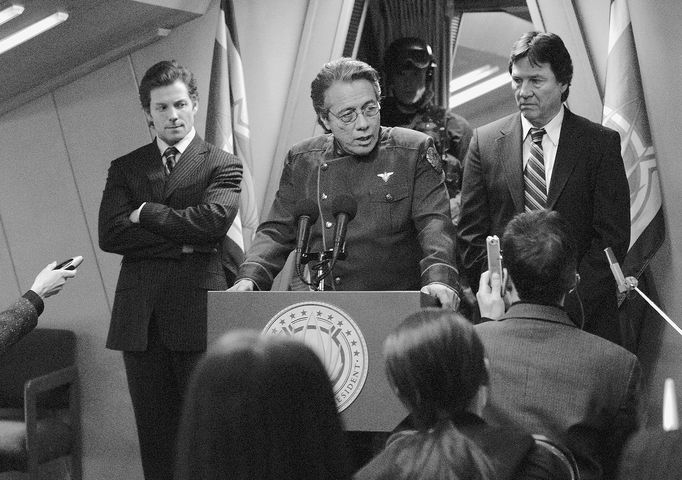
iGEM stands for international Genetically Engineered Machine.q The competition is open to teams of college undergraduates from all over the world. The goal is to take public-domain standardized DNA sequences known as BioBricks—for example, the DNA sequence that codes for a specific biological function such as making luminous protein, or for detecting concentrations of various elements—and insert them into bacteria to make useful biological machines that are not evolved, but intelligently designed to perform certain tasks. The comparison with a brick is deliberate—BioBricks are designed to be as easy to use and as interchangeable as LEGO bricks. The process is very much like taking a handful of electronic components—resistors, capacitors, diodes, logic gates—and putting them together in just the right way to build a robot. Of course, life being what it is, there is never any guarantee that the interaction of all the different BioBricks will have the result you expected them to have.
The iGEM program represents a gigantic shift in the way biology is taught. It used to be that the goal of biology was to learn as much as possible about how various life processes work. Now the cool (and scary) thing about synthetic biology is that the goal is to learn how to use those biological process as black boxes: you give these processes an input, and they give you an output. There’s no need for a synthetic biologist to understand exactly how a certain gene sequence codes for a specific protein—all they need to know is that it does.
In past years, teams of undergraduate college students from around the globe have taken freely available predefined bits of DNA and created:
1. Bacteria that eat industrial pollutants
2. A biosensor that detects high levels of UV radiation
3. Immunobricks to defeat the bacterium that causes ulcers
4. A bacterium that treats lactose intolerance
5. RNA molecules that encode nearly all of the IF . . . THEN Boolean logic of computers
6. Intestinal bacteria that produce fart gas that smells like wintergreen.
The resulting biological machines may be our first baby steps toward creating Cylons, but so far the iGEM students are still taking BioBricks and inserting them into already living bacteria. They haven’t tried to build an entire living organism from catalogue parts. They’re leaving that to the big guys like J. Craig Venter.
Venter, the bad-boy genius of the modern genetics industry, was the maverick who wowed the genetics world in the 1990s by boasting that his company would sequence the entire human genome before the federally funded Human Genome Project finished. Ever since then he has been at the forefront in many different types of genetics-related breakthroughs: his latest task was to grow a bacterium from a completely synthesized genome made from parts available in the laboratory. The announcement in May 2010 of his success was hailed as the first creation of totally synthetic life that we know of on Earth.
It’s possible that this same type of work—discover the genetic code of an already existing creature, synthesize that code, then grow it in a lab—is what the young pilot Bill Adama stumbled upon just before the end of the first Cylon War. The hybrid on the Cylon ice planet clearly was involved in some form of experimentation: it collected Colonial civilians and probably used sections of their DNA to grow the biological parts that surrounded the hybrid’s tank. Perhaps, with the help of the Final Five, those parts became the biological components of Raiders and Centurions. They almost certainly served as the biological components that became the humanoid Cylons themselves.
Frankenstein’s creature condemned his creator for building him without a reason. Our biological machines are not in a position to demand accountability from anyone—yet. But research clearly isn’t going to stop there, and there may come a time when our creations start to experiment on their creators. At that moment, whether we want to admit it or not, we’ll be starting down the same path as the Colonials. When our creations ask “Who am I?” we’ll be able to give our Cylons only one answer: “You’re us.”
CHAPTER 4
Cylon Intelligence and the Society of Mind
What type of brain does a Cylon have? Since Cylons are intelligent organic creatures, virtually indistinguishable from Colonials, their brains must be at least superficially similar to Colonial brains. If you assume that the Colonial brain is similar or identical to a human brain of the twenty-first century, the Cylon brain should meet the following minimum requirements:
• Elements: 100 billion neurons
• Connections: 100 trillion
• Storage: 100 million megabytes
• Image Processing: 210 million images per year
• Processing Speed: 0.001 Megahertz
• Power Requirement: 20 watts
Though it’s never specifically stated, a lot of evidence points to the idea that Cylons are considerably smarter than their Colonial counterparts.
Cyclon model Two, also known as Leoben Conoy
Leoben and Starbuck look down at the child she beleives is hers.
Six in a projection of a forest.
The most obvious example comes from the episode “Torn,” in which Six tells Baltar that Cylons can use their brains to project whatever imagery around them they wish. She gives the example of a corridor in a Cylon basestar: to Baltar it’s just a bare metallic hallway, but Six can use the powers of projection within the Cylon mind to make walking down the corridor like taking a stroll through a beautiful sun-dappled forest.
At the very least, Cylons use what brains they have differently. One of the most common misconceptions about cognition is that humans use only 10 percent of their brain power. Anyone who has ever seen a PET scan of their own brain activity knows this isn’t true—most scans show sporadic activity happening throughout the entire brain. While it is true that not all parts of the brain are active at the same time—when you’re sitting quietly listening to instrumental music, you’re probably not using the verbal or the motor control portions of your brain—over time, you can rest assured that you use 100 percent of your brain. Cylon mental superiority might just be a result of them using more of their brain at any given time.
If Cylon brains are more powerful than ours, they might have considerably more neurons and synapses, and possibly faster neuronal processing speeds, though that bumps up against the Cylon Indistinguishability Conjecture.r A much more reasonable way that Cylon brains might be different from Colonial brains is in the “software,” the ability to perform at a much higher level than Colonials while still maintaining the same hardware.s
A synapse is a small gap between brain neurons, on the order of approximately tens of nanometers, which serves as a junction to bring neurons together. The complex web of connections between neurons is similar to the complex web of connections between transistors in a computer’s CPU, with one main difference. Thanks to synapses, neurons are not connected one-to-one; they are connected many-to-many. A synapse allows many neurons to connect to many other neurons by not really connecting at all.
When a stimulus to a neuron reaches a certain threshold strength (called the neuron’s action potential), the neuron opens several vesicles within itself and releases a chemical known as a neurotransmitter, the purpose of which is to tell the other neurons, “Hey, this neuron has fired!” The neurotransmitter flows into the synapses between neurons and spreads among them, with the closest neuron obviously getting the strongest dose of neurotransmitter. More distant surrounding neurons get considerably smaller doses. Whatever message the firing neuron was trying to send, the neurotransmitter gets the message across. If the amount of neurotransmitter absorbed by any of the surrounding neurons is sufficient to reach their action potential, those neurons will then fire, reinforcing the original stimulus that caused the first neuron to signal.
Neuroscientists understand that learning takes place when one neuron stimulates another neuron repeatedly and/or continuously for a few seconds or even minutes. When this happens, the “teacher” neuron releases an additional protein that helps the surrounding “student” neurons to grow. When these student neurons grow, they strengthen the connection between themselves and the teacher. Whenever the “teacher” fires off a signal, the “students” will over time become more receptive to receiving it. One stimulus will become tightly associated with a specific response, and the brain will have learned something new.t
One thing brain scientists don’t yet fully understand is how a functioning brain—one like ours that can think and reason and create (or at least appreciate) music and art—can be made out of repeated units of a relatively simple object like a neuron. In this way neuroscientists have a lot in common with artificial intelligence researchers who are trying to solve essentially the same problem from the other direction—how to turn a box of computer chips into a functioning brain.
The MIT professor Marvin Minsky is rightly described as one of the fathers of AI. Minsky built the first random neural net computer (the predecessor to Cylons) in 1951 and patented the first head-mounted computer display twelve years later. In the 1970s, Minsky and Seymour Papert started to develop their “Society of Mind” theory. They said that the complex construction we call the “mind”—the realm of language, memory, learning, consciousness, the sense of self, and of free will—is actually built brick-by-brick of much smaller subunits, which he calls agents. These agents are themselves mindless; it is through their interaction that they produce the mind.
As Minsky said in his 1988 book Society of Mind: “What magical trick makes us intelligent? The trick is that there is no trick. The power of intelligence stems from our vast diversity, not from any single, perfect principle.” In other words, to employ another Minskyism, “Minds are what brains do.”
As we mentioned, an important clue that Cylon brains work the same (or in a similar) way came in the episode “Six of One,” when we learned about the Centurions’ telencephalic inhibitor. The humanoid Cylons wouldn’t need that kludge if Centurion brains were a bunch of transistors running Python. Such a gadget would only be necessary if Cylon brains worked as a Society of Mind—if “mind” just naturally emerged as a consequence of connecting together a threshold quantity of smaller brain subunits. If that’s the case, then twenty-first-century AI researchers here on Earth have only one question: What is that threshold quantity?
Sentience is another word for consciousness, or the ability to be aware of oneself. For example, you know that you are a human.u
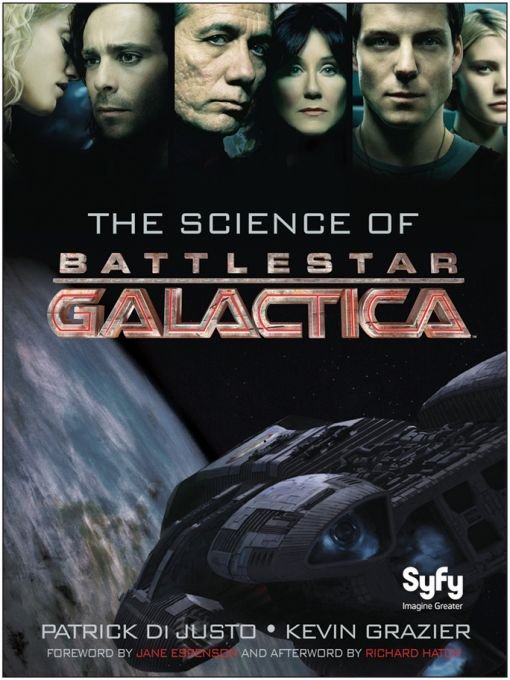

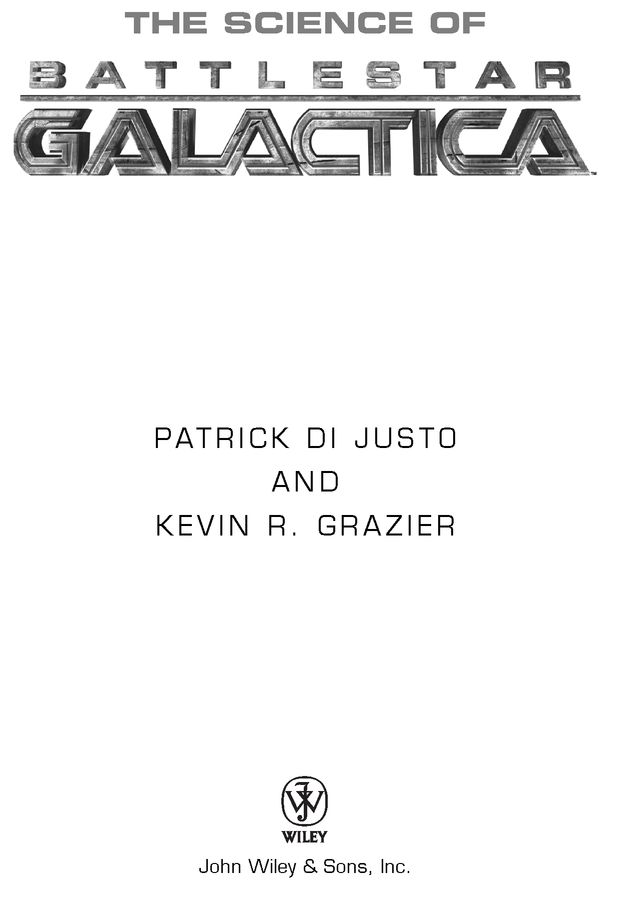

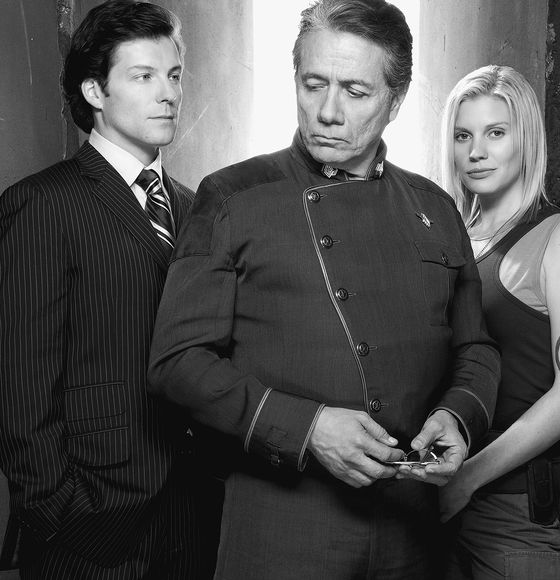
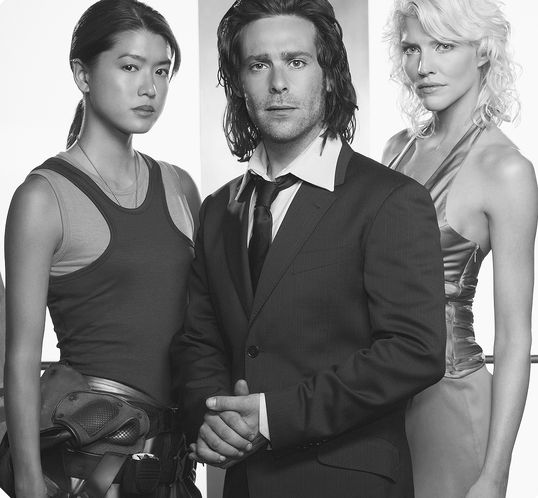

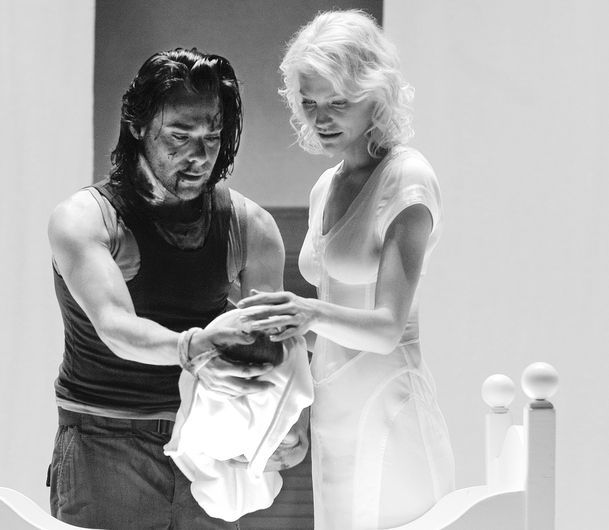
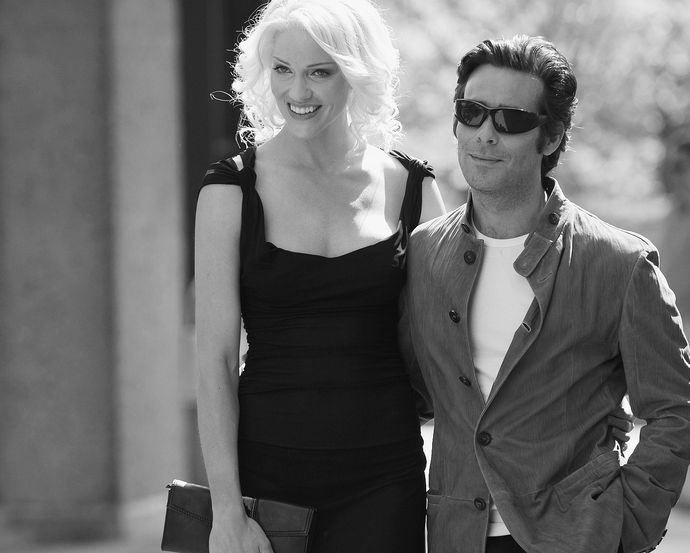
 ) radicals, carbon dioxide (CO2 ) and carbon monoxide (CO). With those chemicals you can build a kingdom of life.
) radicals, carbon dioxide (CO2 ) and carbon monoxide (CO). With those chemicals you can build a kingdom of life.
 Seven. For the rest of this book we’ll be referring to the known twelve humanoid models as just Cylons,k unless we need to specify one or the other.
Seven. For the rest of this book we’ll be referring to the known twelve humanoid models as just Cylons,k unless we need to specify one or the other.
